Mammut Taiss Light Mid GTX review: featherlight agility
This is a seriously light B2 mountain boot that offers flexibility, feel and precision for technical terrain
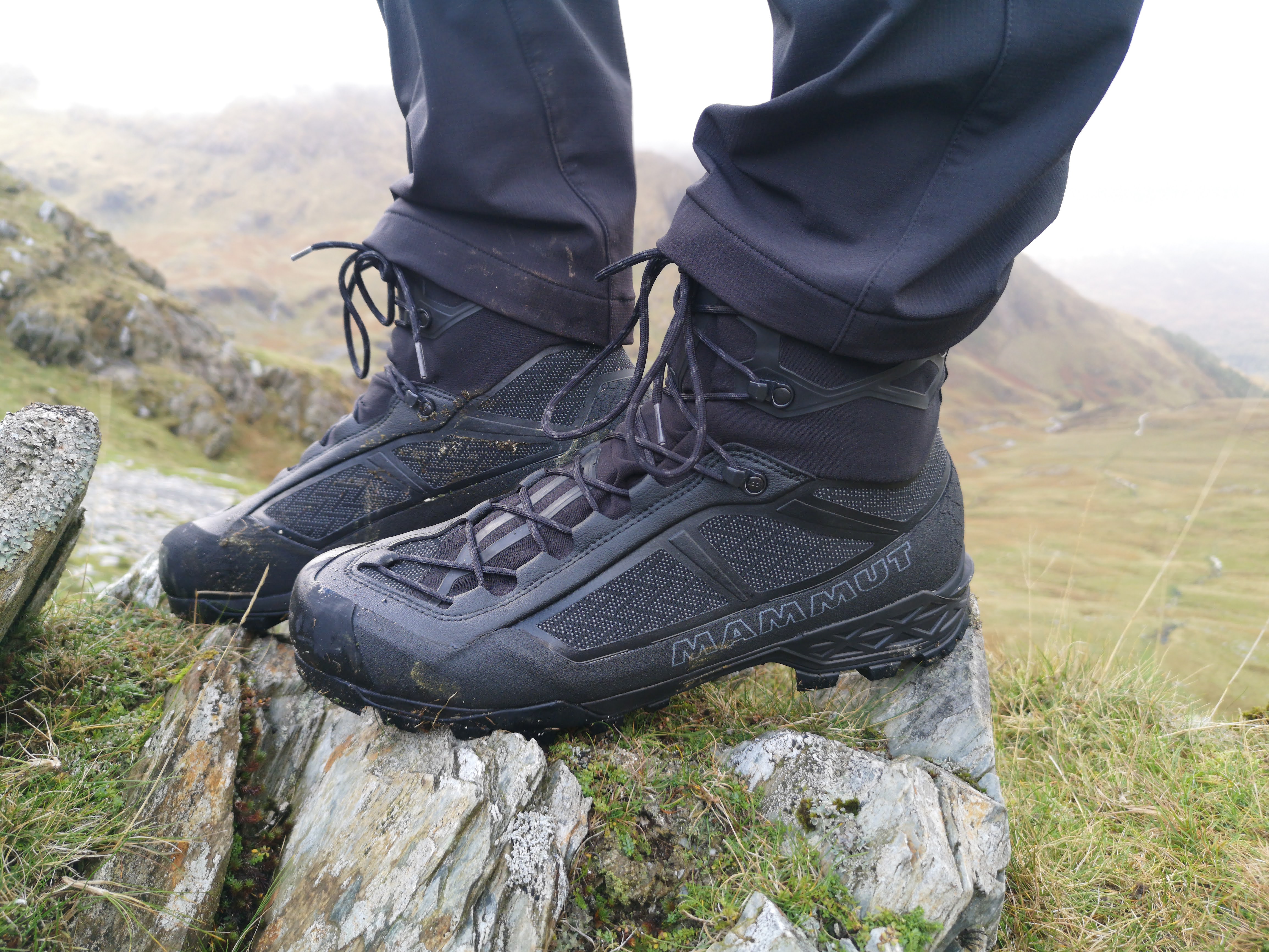
The Mammut Taiss Light Mid GTX is currently the lightest B2 (4-season) mountaineering boot on the market. As you might expect, it feels nimble and agile, but it’s also decently robust, able to cope with tough terrain. It’s only real drawbacks for UK winter use are its spartan feel underfoot, its lack of insulation and lower ankle cuff. They’re not as warm, protective or well-cushioned as bigger, burlier boots. However, if you’re looking for flexibility, feel and precision, they’re a superb choice.
-
+
Impressively lightweight
-
+
Nimble and precise feel
-
+
C2 crampon compatible
-
-
Not the most cushioned underfoot
-
-
No insulation
-
-
Asymmetric toebox and offset lacing won’t suit all foot shapes
Why you can trust T3

‘Taiss’ is a word that means ‘steep’ in Friulian, the traditional mountain language of the Swiss-Italian Alps. It’s the name that Mammut has given to its all-round mountaineering range, which sits just below the Swiss brand’s pinnacle Eiger Extreme collection. However, Taiss products are all still focused on providing lightweight technical performance in classic rocky, glaciated Alpine terrain. As such, the Taiss Light Mid GTX is a boot that promises ‘absolute grip and reliable performance’, whether you’re scrambling over ice or rock.
This is undoubtedly a technical boot. Mammut proudly bill the Taiss Light Mid GTX as the first in a ‘new generation of mountaineering boots’. That’s not just marketing spin – these are the lightest crampon-compatible mountaineering boots on the market. When it comes to weight, they even undercut featherweight rivals like the Arc’teryx Acrux LT and the Scarpa Ribelle Lite HD.
Case in point: even in our tester’s hefty size 12s, they tip the scales at just 700g per boot, which is seriously impressive. As that figure suggests, the design focus of the Taiss Light Mid GTX is on lightness, allied with durability and performance to cope with the demands of rock and ice on alpine terrain. This makes them one of the best hiking boots out there, particularly for winter hillwalking and mountaineering here in the UK.
Mammut Taiss Light Mid GTX boot: specifications
- Weight per boot 700g (size UK 12)
- Upper Suede and Schoeller soft shell
- Membrane Gore-Tex
- Sole Vibram Litebase
- Sizes UK 6.5-12 (men’s); UK 4.5-8.5 (women’s)
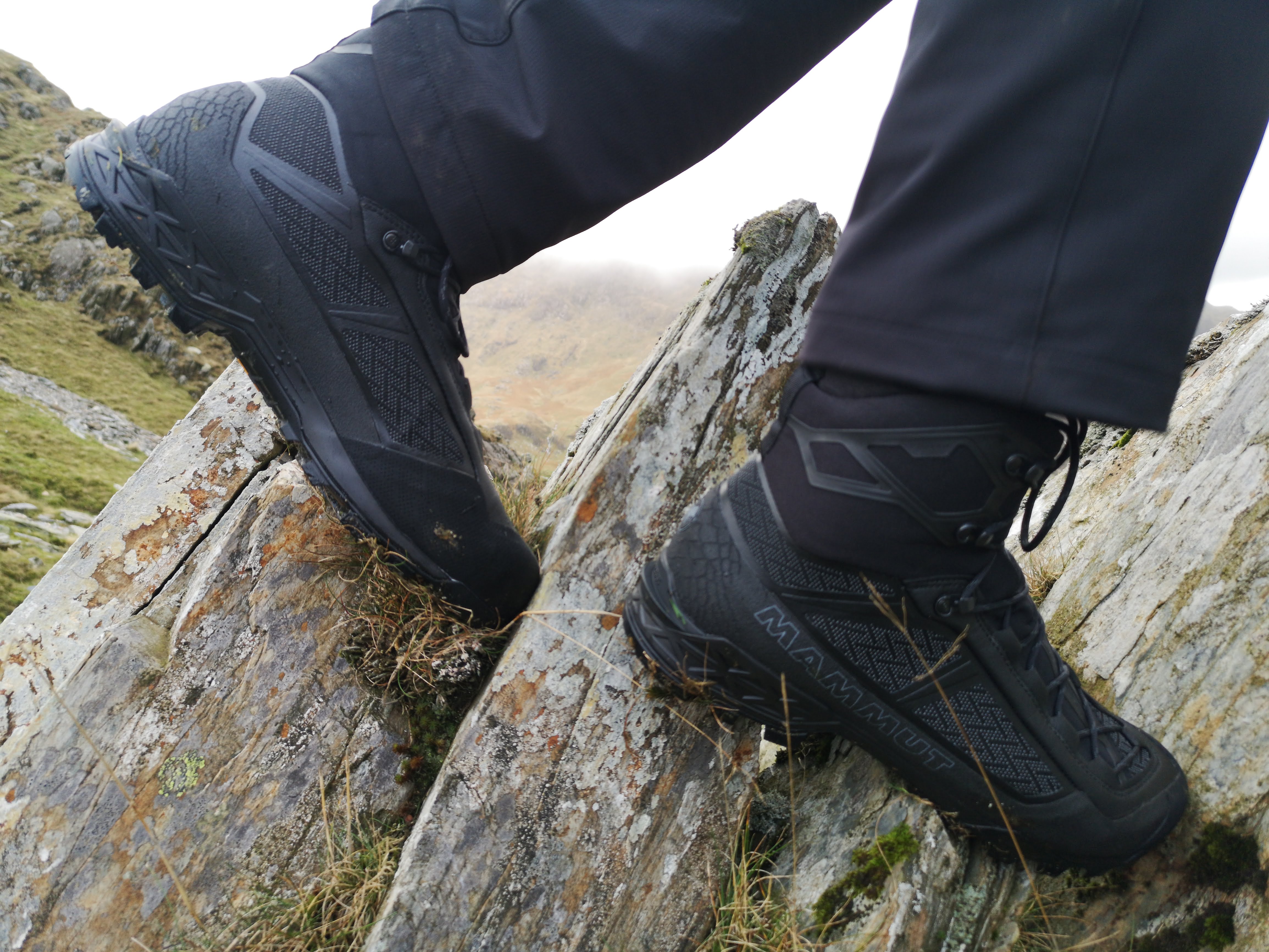
Mammut Taiss Light Mid GTX boot: design and features
The boots incorporate plenty of innovative materials and technology. Foremost among these is the adoption of Vibram’s new Litebase sole unit. This uses the same lug depth and pattern as standard Vibram soles, delivering the same performance and traction underfoot, whilst reducing the sole thickness by 50% and the overall sole weight by 30%. It’s worth noting that this boot can also be resoled if needed, extending its effective lifespan.
On top of that, a PU midsole offers durable cushioning while an embedded rigid, carbon-fibre shank provides stability and sufficient stiffness for use with C2 semi-automatic climbing or mountaineering crampons.
Uppers are built on Mammut’s Georganic 3D technology. It’s an unusual anatomical board last that follows the typical asymmetric shape of the foot. In addition, the boot has offset lacing and an unusual elasticated softshell one-piece wrap ‘monotongue’, designed to help relieve pressure points on the top of the foot. The lacing is a 2-zone system, with a locking lace hook at the base of the ankle and two upper sets of lace hooks. This enables tension to be adjusted independently across the top of the foot and at the ankle, so you can dial in the fit for different scenarios, e.g. from the walk in to steeper climbs.
The ankle cuff is a typical mid-cut height, but to provide some additional protection from ingress of snow, rain and debris, there’s an integrated stretch neoprene gaiter at the heel. The boot is also lined with a waterproof-breathable Gore-Tex membrane to keep feet dry.
Lastly, a wraparound rand and a TPU ‘exoskeleton’ adds rigidity, protection and abrasion resistance, without the additional weight of traditional rubber overlays. The rest of the boot is made from leather and tough fabric panels, with seamless Schoeller softshell material around the ankle bone. This ensures excellent flexibility and unencumbered freedom of movement.
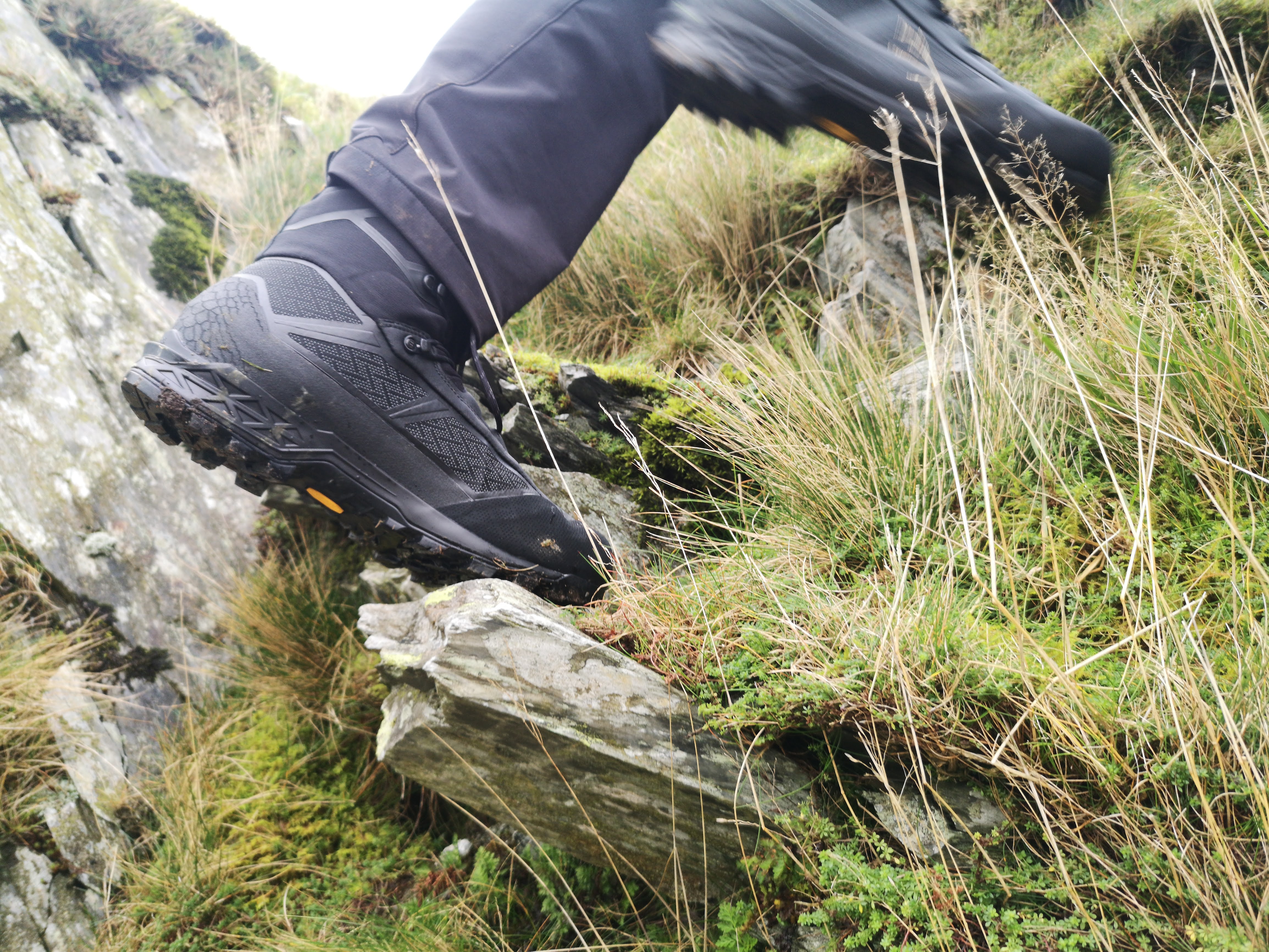
Mammut Taiss Light Mid GTX boot: Performance and comfort
The Taiss Light Mid GTX is all about delivering precision and feel in a lightweight but capable package. The result is a very nimble, agile boot on technical terrain and steeper ground. Edging performance is particularly good thanks to an asymmetric toebox and a flat ‘climbing zone’ at the front of the boot. This puts plenty of power at the big toe, just like a climbing shoe, and delivers excellent contact grip, especially on small pockets and ledges. The rest of the tread uses a lug pattern that is exclusive to Mammut. We found that it delivers reasonable traction, and though the lugs aren’t the deepest, they are very widely spaced to minimise build-up of mud and snow.
They also perform well with a crampon fitted, and we found we could get a close, secure fit with both Grivel G12s and Black Diamond Seracs. The rear heel welt accommodates the clip of a C2, and the midsole provides sufficient stiffness to tackle technical winter climbs and scrambles. They’re not quite as stiff as the rival Arc’teryx Acrux LT boot, but they’re noticeably stiffer than the Scarpa Ribelle Lite HD. As such, they occupy a fairly happy middle ground as a B2 boot with technical capability but that can also be worn for extended walk-ins without causing too much heel slip or foot fatigue.
There is a slight caveat to that statement, however. With such a lightweight boot, something has to give, and with the use of the Vibram Litebase sole unit, you lose several millimetres of material between your foot and the ground. As such, they feel a bit hard and unforgiving in terms of cushioning – but then again, that is a criticism that we’d also level at the Taiss Light Mid’s two closest rivals the Arc’teryx Acrux LT and the Scarpa Ribelle Light HD.
It's also worth trying these before you buy. Of course, that’s advice that applies to all boots, especially if you’re considering purchasing more technical B1 and B2 winter boots – but here, it’s vital. That’s because this boot’s close fit, unusually shaped toebox and offset lacing will definitely not suit all foot shapes. Our tester went for his standard size and found them a little too tight; not enough to be unwearable, but enough to regret not going at least a half-size up. Unless you have a particularly narrow forefoot, this is something worth considering, especially if you plan to wear these with heavyweight mountaineering socks (which would certainly be our advice for UK winter use, as the Taiss Light Mids are not insulated).
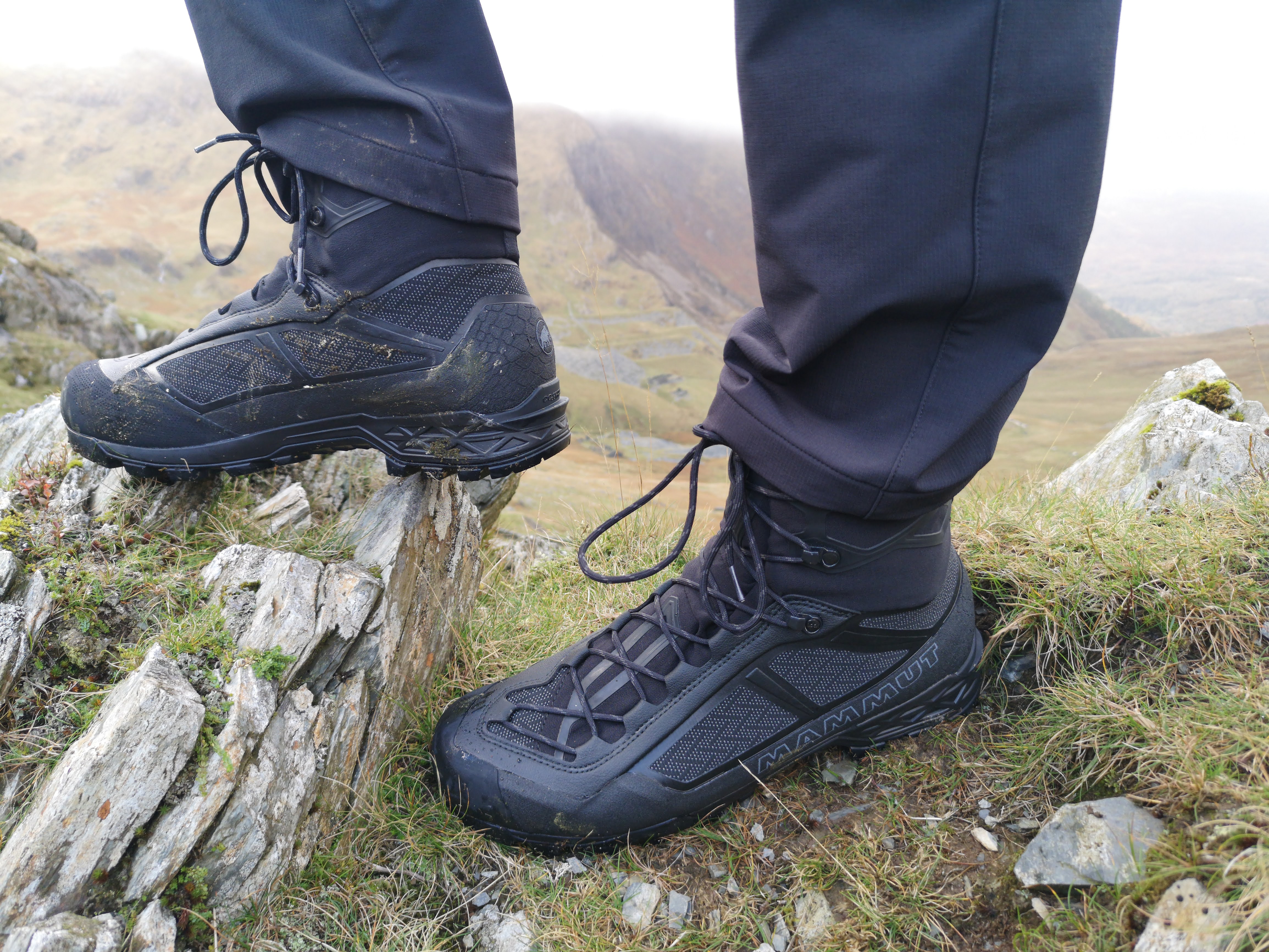
Mammut Taiss Light Mid GTX hiking boot: final verdict
Unbelievably light, precise and nimble, these capable 4-season boots excel on technical terrain. And despite their lightweight build, they’re also decently robust, able to cope with abrasion from rock and ice. However, they’re still a bit of a specialist boot, especially for UK winter use. In particular, their spartan feel underfoot, lack of insulation and lower ankle cuff are all design features that mean they are not as warm, protective or well-cushioned as bigger, burlier boots. In those respects, there are probably better all-round B2s out there. However, if your priorities are flexibility, feel and precision, as well as the lowest weight possible, they’re the best out there right now.
Sign up to the T3 newsletter for smarter living straight to your inbox
Get all the latest news, reviews, deals and buying guides on gorgeous tech, home and active products from the T3 experts

An outdoors writer and editor, Matt Jones has been testing kit in the field for nearly a decade. Having worked for both the Ramblers and the Scouts, he knows one or two things about walking and camping, and loves all things adventure, particularly long-distance backpacking, wild camping and climbing mountains – especially in Wales. He’s based in Snowdonia and last year thru-hiked the Cambrian Way, which runs for 298 miles from Cardiff to Conwy, with a total ascent of 73,700ft (that’s nearly 2½ times the height of Everest). Follow Matt on Insta and Twitter at @mattymountains
-
 Garmin’s on a mission to update your wrist into oblivion as 100+ tweaks land on Fenix and Enduro watches
Garmin’s on a mission to update your wrist into oblivion as 100+ tweaks land on Fenix and Enduro watchesThe latest beta update looks comprehensive
By Matt Kollat Published
-
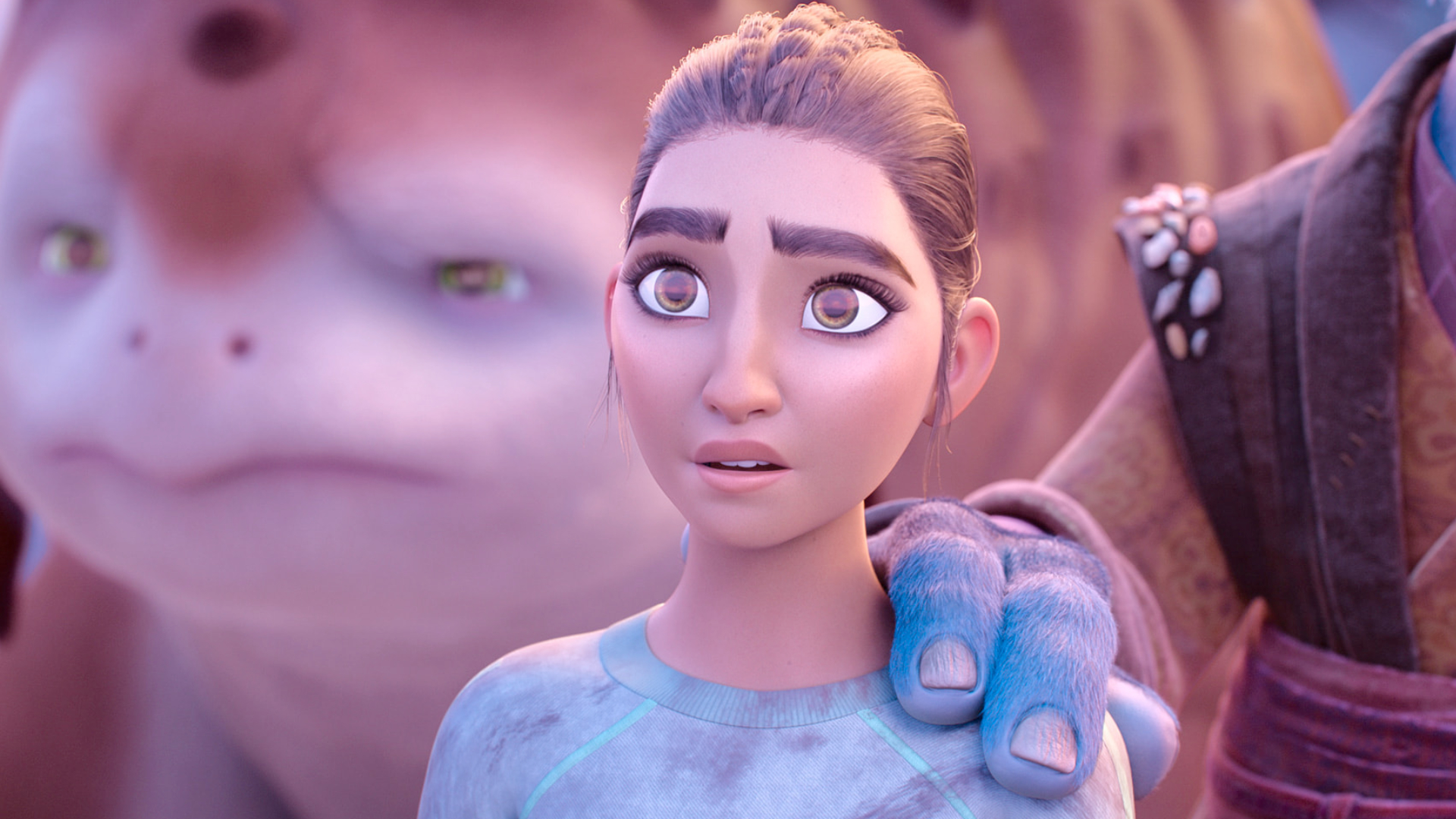 Apple TV+'s beloved sci-fi series gets a surprise sequel and trailer
Apple TV+'s beloved sci-fi series gets a surprise sequel and trailerWondla is coming back
By Max Freeman-Mills Published
-
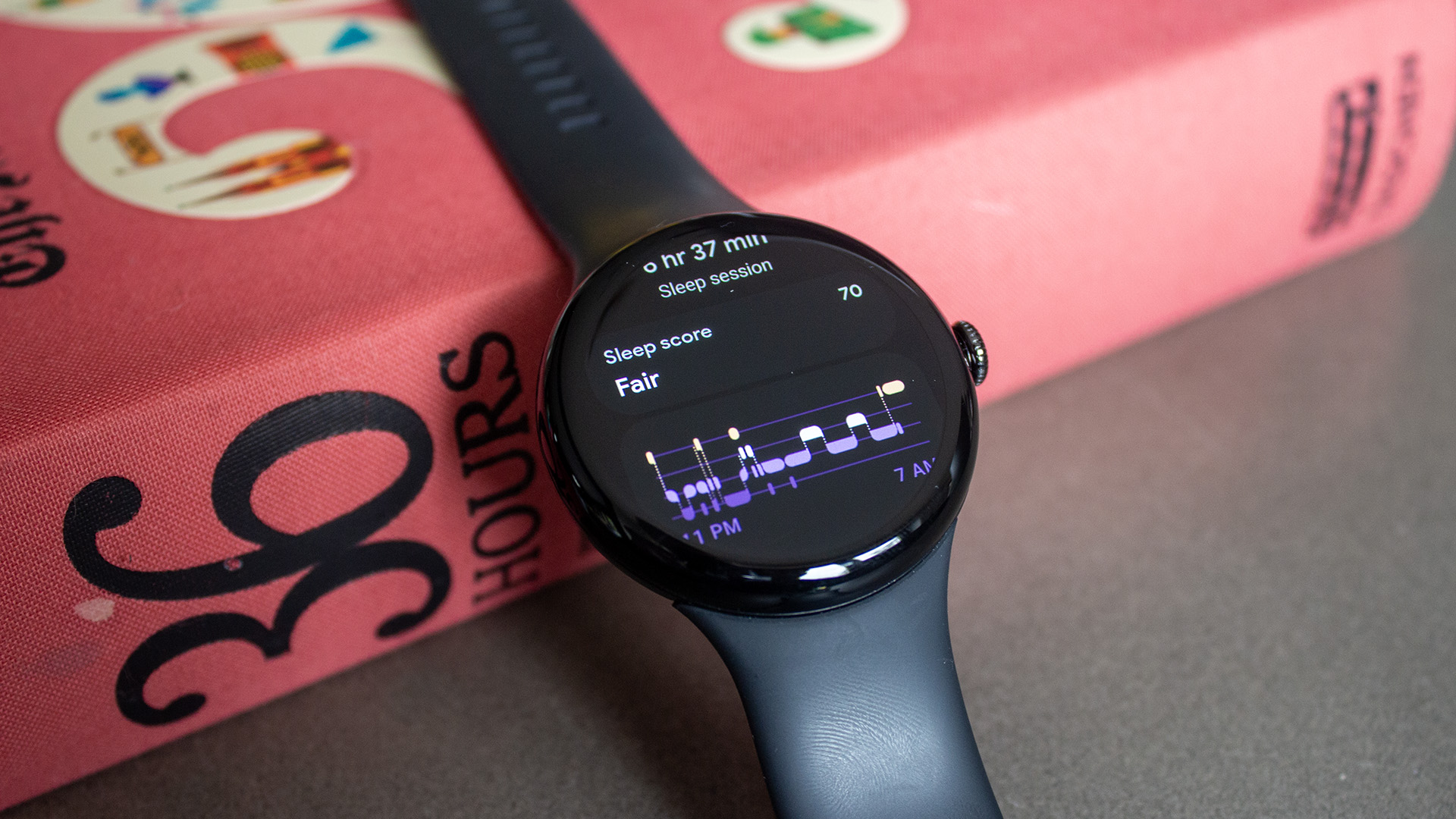 Google Pixel Watch 3 just got a potentially life-saving update in the US
Google Pixel Watch 3 just got a potentially life-saving update in the USThe latest update brings advanced heart monitoring to American wrists
By Matt Kollat Published